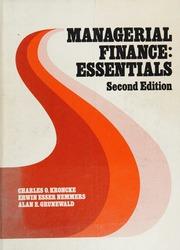Second control work 19 variant 10-30 % 16-7A. (EBIT-EPS analsis) Three recent graduates of the computer science program at Southern Tennessee Tech are forming a company to write and distribute software for various personal computers. Initially, the corporation will operate in the southern region of Tennessee, North Carolina, and South Carolina. Twelve serious prospects for retail outlets have already been identified and committed to the firm. The firm's software products have been tested and displayed at several trade shows and computer fairs in the perceived operating region. All that is lacking is adequate financing to continue with the project. A small group of private investors in the Adlanta, Georgia, area is interested in financing the new company. Two financing propasals are being evaluated. The first (plan A) is an all-common-equity capital structure. Two million dollars would be raised by selling common stock at $20 per common share. Plan B would involve the use of financial leverage. One million dollars would be raised selling bonds with an effective interest rate of 11 percent (per annum). Under this second plan, the remaining S1 mil- lion would be raised by selling common stock at the $20 price per share. The use of financial leverage is considered to be a permanent part of the firm's capitalization, so no fixed maturity date is needed for the analysis. A 34 percent tax rate is appropriate for the analysis. a. Find the EBIT indifference level associated with the two financing plans. b. A detailed financial analysis of the firm's prospects suggests that the long-term EBIT will be above $300,000 annually.Taking this into consideration, which plan will generate the higher EPS? c.Suppose long-term EBIT is forecast to be $300,000 per year. Under plan A, a price this set of financial relationships does hold, which financing plan would you recommend? earnings ratio of 19 would apply. Under plan B, a price/earnings ratio of 15 would apply. If Break-crvom point and oprating leverage) Footwear,Inc, manufactures a complete line of 30% ons and women's dress shoes for independent merchants. The average selling price of its fin- shed product is $8S per pair. The variable cost for this same pair of shoes is S58. Footwear, Inc., scurs fixed costs of S170,000 per year omspmnpt b. What is the dollar sales volume the firm must achieve to reach the break-even point? c. What would be the firm's profit or loss at the following units of production sold: a. 1 000 nairs of shoes? 9,000 pairs of shoes? 15,000 pairs of shoes







